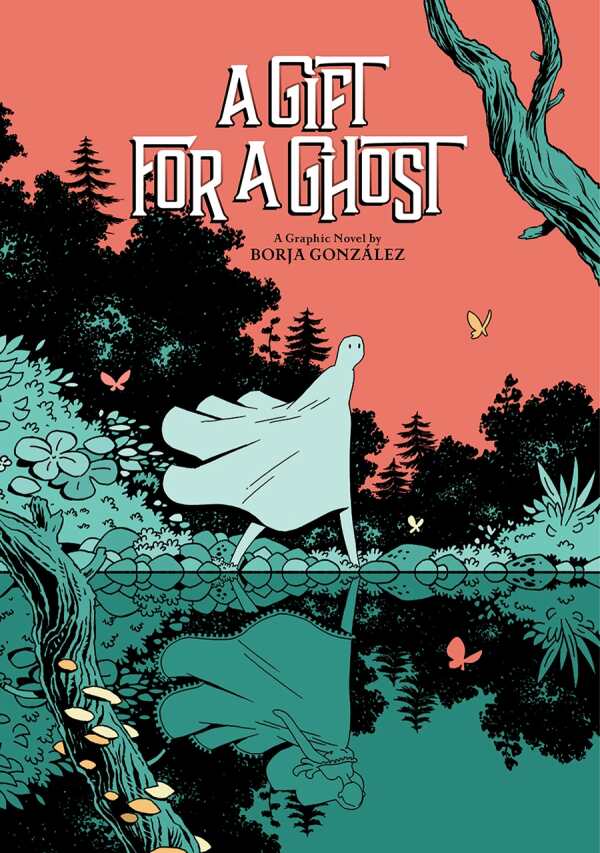A Gift for a Ghost
In Borja Gonzalez’s subtle, surreal A Gift for a Ghost, two girls form a connection despite living 160 years apart.
Teresa lives in 1856 and is preparing to make her society debut. She follows her mother’s instructions and memorizes suitable poems. But Teresa isn’t like her mother or her sisters; she also enjoys writing poems about “vampires, crypts, and dementia.”
Through a mysterious, magical link, Teresa comes into contact with Laura, a modern-day, enthusiastic, somewhat disaffected teen who likes to wear costumes. Upon their first meeting, Laura is dressed as a skeleton. She’s taking the first steps toward creating a punk rock band with her friends, and Teresa’s poetry feeds into her bizarre song lyrics, with neither girl aware of the other’s true identity.
Parallels are drawn between Teresa and Laura as they work to find themselves under very different circumstances. At times, Teresa speaks in what seems like modern language, using “stiff” for a dead body or profanities that a young aristocrat would be unlikely to utter, but such choices serve to emphasize just how out of place she feels.
The book is haunting—not because Laura spends time dressed as a ghost, but because of the heartbreaking sense of alienation that it depicts. Its characters are drawn without faces, hands, or feet, but their states of mind are conveyed without a misstep. Such is the case on one page of nine panels, in which Laura, in her ghost sheet, orders ice cream; the sequence captures her uncertainty and awkwardness.
A Gift for a Ghost is an uncommon fantasy that speaks to the perennial, difficult-to-verbalize issues that teenagers face.
Reviewed by
Peter Dabbene
Disclosure: This article is not an endorsement, but a review. The publisher of this book provided free copies of the book to have their book reviewed by a professional reviewer. No fee was paid by the publisher for this review. Foreword Reviews only recommends books that we love. Foreword Magazine, Inc. is disclosing this in accordance with the Federal Trade Commission’s 16 CFR, Part 255.

